The Red River Showdown traffic on I-35 is already rough. Here's why it's going to get worse
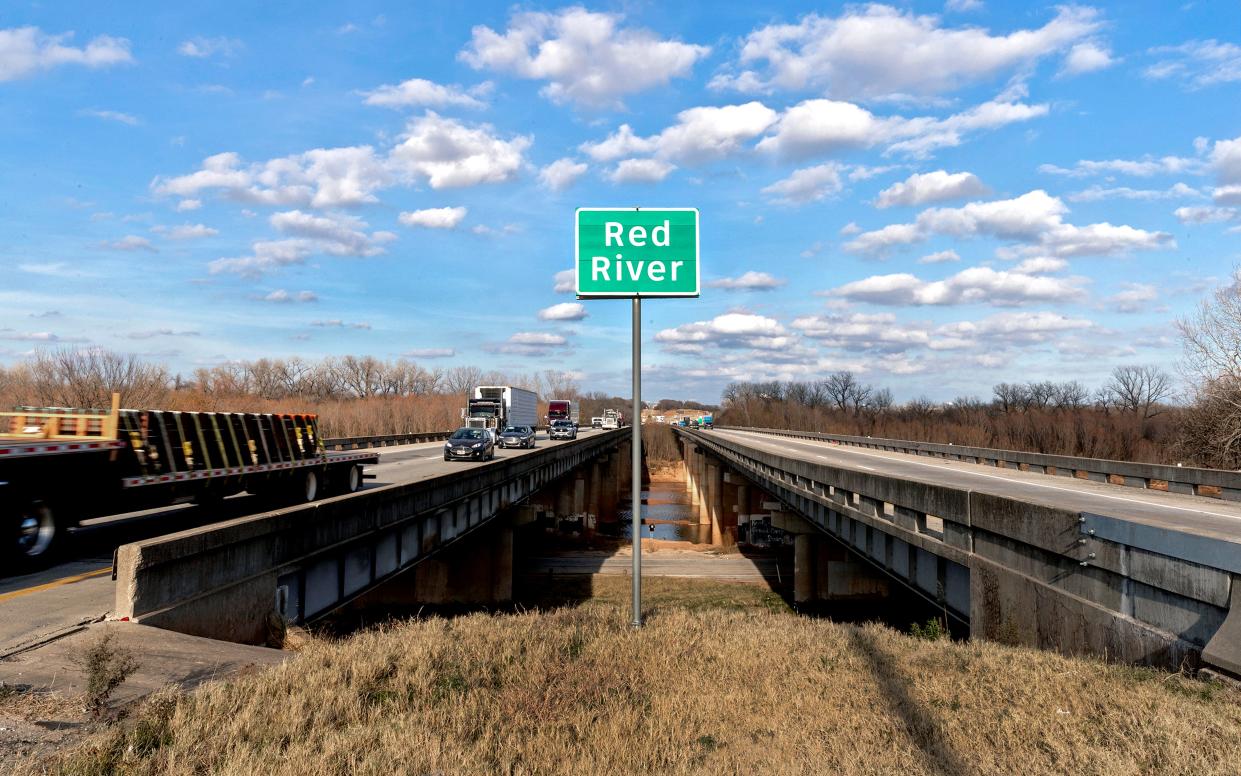
Years of construction and traffic have created headaches for travelers along Interstate 35 between Oklahoma City and Dallas — especially each October when thousands of Oklahomans make the trek south for the OU-Texas football game.
Those headaches are about to get worse.
The Red River bridge spanning the Oklahoma-Texas border soon will become a construction zone as part of a joint effort to widen I-35 to at least six lanes between Oklahoma City and the U.S.-Mexico border.
Construction along the highway, an ongoing hassle for drivers in both states for the past 30 years, won't end anytime soon.
Oklahoma and Texas likely will spend billions on the interstate. Texas is looking at how to cover a $19 billion funding gap to widen its portion of I-35 to between six and eight lanes, while Oklahoma is pursuing its own plan to widen the highway to six lanes “Red River to the Oklahoma River.”
Brian Taylor, chief engineer at the Oklahoma Department of Transportation, said Oklahoma has about $500 million in the agency’s eight-year plan for widening and improving its stretch of I-35. While Texas is currently spending $2.5 billion widening and improving its stretch of the highway, Taylor warns that it will take 50 years to overcome existing traffic issues at Oklahoma’s current rate of highway funding.
Recent studies using U.S. Census Bureau data project the Dallas/Fort Worth area is set to replace Chicago as the country’s third-largest metroplex. Oklahoma City, meanwhile, was one of 14 American cities that added more than 100,000 residents between 2010 and 2020 and was the sixth-fastest growing top 20 city between 2020 and 2022.
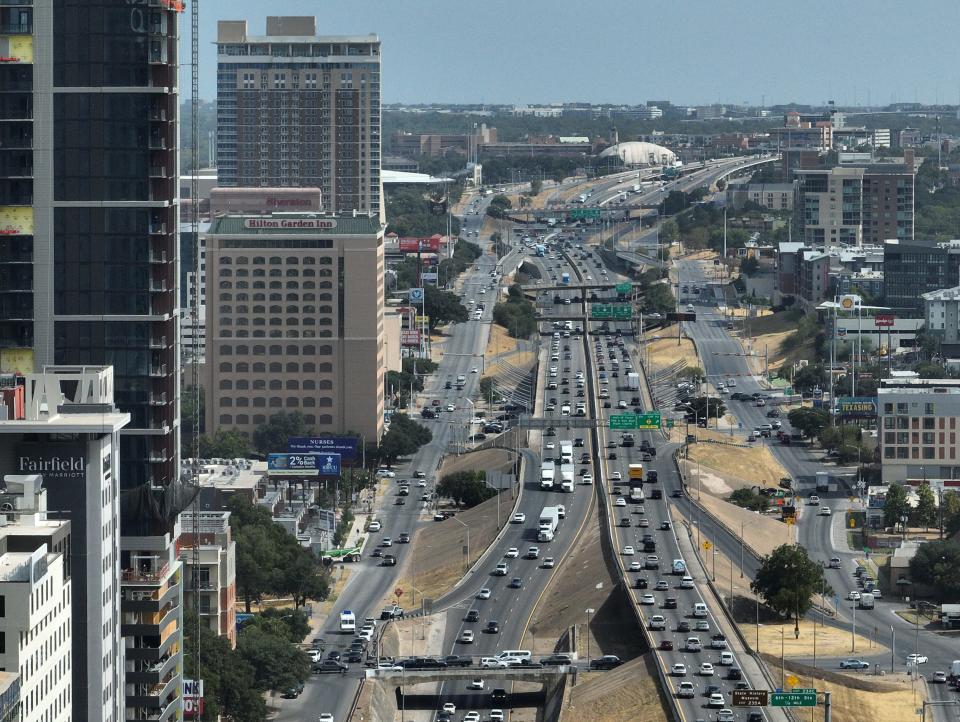
Concerns about I-35 traffic between Norman and Oklahoma City are not new, and drivers complain traffic jams have grown from 30 minutes to an hour and now up to 90 minutes. Engineers report an average of six crashes a day are reported along the Red River to Oklahoma River corridor.
Officials are already trying to head off issues stemming from population growth and increased traffic with the $5 billion ACCESS Oklahoma turnpike expansion plan. The 15-year expansion plan includes construction of new toll roads hotly contested by residents fighting to prevent acquisition and destruction of their homes.
“The takeaway is the status quo is not possible,” Taylor said. “As demand on our system continues to increase, we must continue to work toward new and better solutions.
“Interstate 35 is a vital transportation corridor that is essential to the economic well-being of the central United States, is one of two major north-south interstates west of Mississippi River, and it has state national and international significance.”
Texas leading project to widen Red River bridges on I-35
Texas is leading on the Red River project while it also struggles to address worsening traffic jams in Dallas, Fort Worth and Austin. The estimated $325 million Red River bridge project will include the stretch of highway between the river and U.S. 82 in Gainesville and a one-mile segment north of the Oklahoma-Texas border.
The project also will include extension of a service road currently in use on the Texas side of the border. The extension would connect with U.S. 77 on the Oklahoma side of the border using the current southbound I-35 bridge once the new bridges are built.
Adele Lewis, spokesperson for the Texas Department of Transportation, said the agency will select a contractor in April with construction to start by fall. Engineers expect project will take five years to complete.
“This is a huge project,” Lewis said. “It will include widening all the main lanes, frontage roads and bridge.”
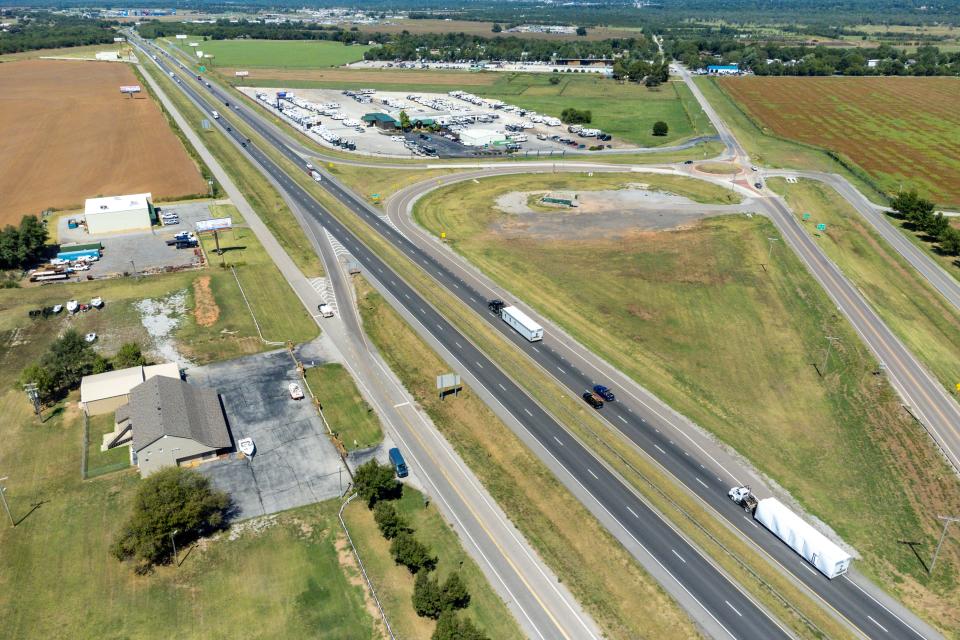
As much as the bridges are an annual passage for OU football fans, thousands of Texans travel northbound on I-35 to Winstar, the country's largest casino, just north of the border in Thackerville.
Though Oklahoma is not building the bridges, the state is contributing $34 million toward the project. Oklahoma is spending another estimated $76 million widening the stretch of I-35 two miles north of the Red River to Marietta.
Other major projects along I-35 in Oklahoma include an estimated $102 million in widening and improvements along a 35-mile stretch between Goldsby and Purcell and reconstruction of the I-35 junction with Interstate 240 in south Oklahoma City. The junction, which will include fly-over ramps similar to those built on Interstate 235, will cost an estimated $93 million for the remaining four phases of construction.
A study underway, "Red River to Oklahoma River," will draw up a long-term plan for I-35 in Oklahoma while Texas pursues a minimum six-lane width on its 503-mile section of the highway. The study is expected to be completed in 2024.
The study's goal is to determine how best to widen the section of I-35 between Purcell to Marietta, which will still be two lanes each way after the currently funded projects are complete. Taylor said the highway's winding corridor through Oklahoma's Arbuckle Mountains already has a third lane in each direction for trucks making the difficult climbs and that area likely won't need more widening in the foreseeable future.
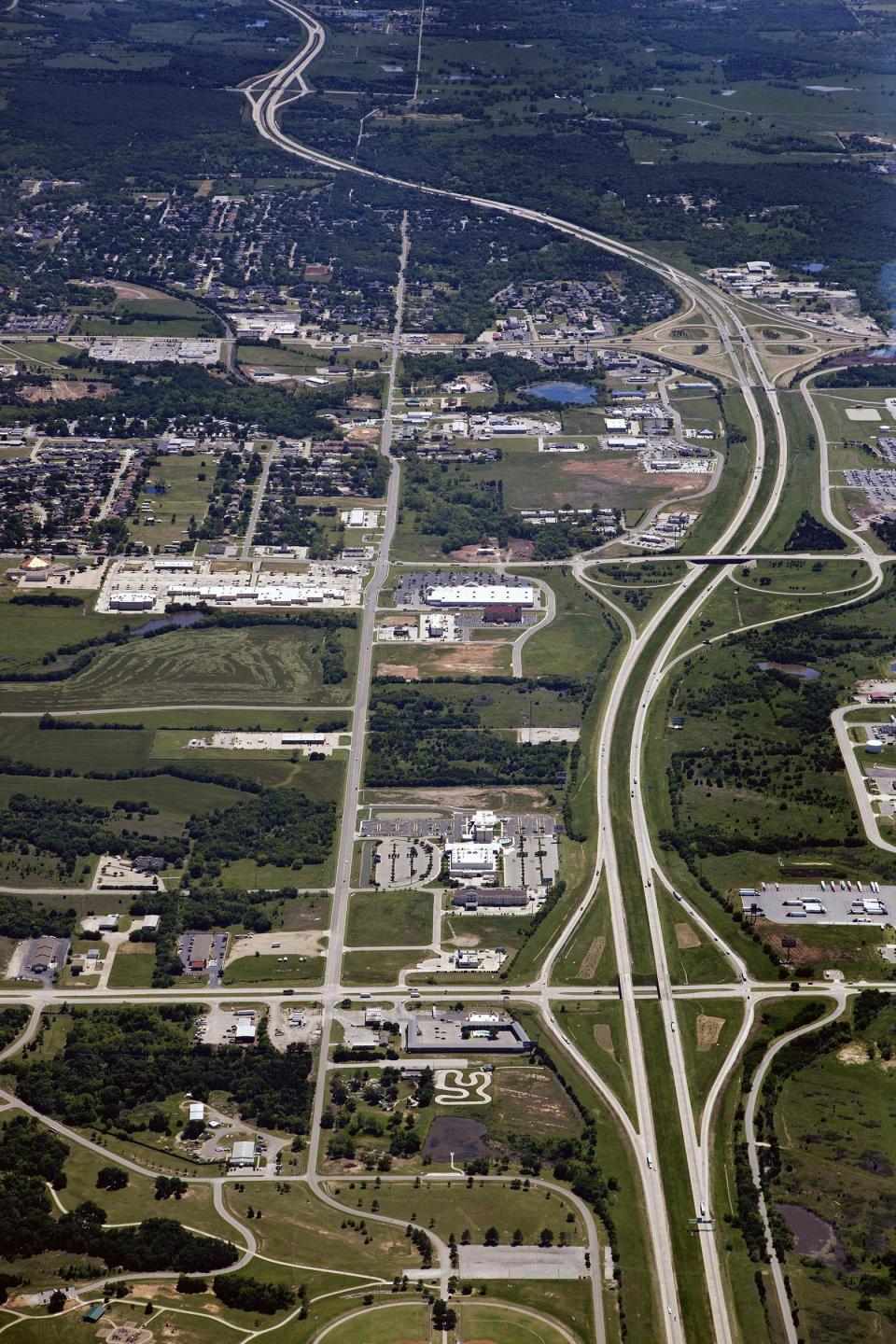
In addition to widening, the study will look at other needs along the Red River to Oklahoma River corridor where other traffic solutions might be needed. The study also doesn't include I-35 north of Edmond to the Kansas border, where much of the highway remains at four lanes.
“The areas of greatest needs are along the north and south ends of the (Oklahoma City to Red River) corridor, from Purcell north to Interstate 40 and from the Red River north to the Ardmore airport," Taylor said.
More: Traffic on I-35 is abysmal. Here's what Edmond has planned to fix it
Bill Murphy, president of the Ardmore Development Authority, said his city has seen substantial growth in manufacturing and distribution hubs as it has emerged as an extension of the north Texas economy.
“With their plans to widen I-35 to six lanes, and in some places eight lanes, we want to make sure Oklahoma isn’t just introducing a bottleneck over the Red River,” Murphy said. “I know how much that widening is needed, not just for general transportation but also for the amount of commerce that takes place along the corridor between Mexico and Canada.”
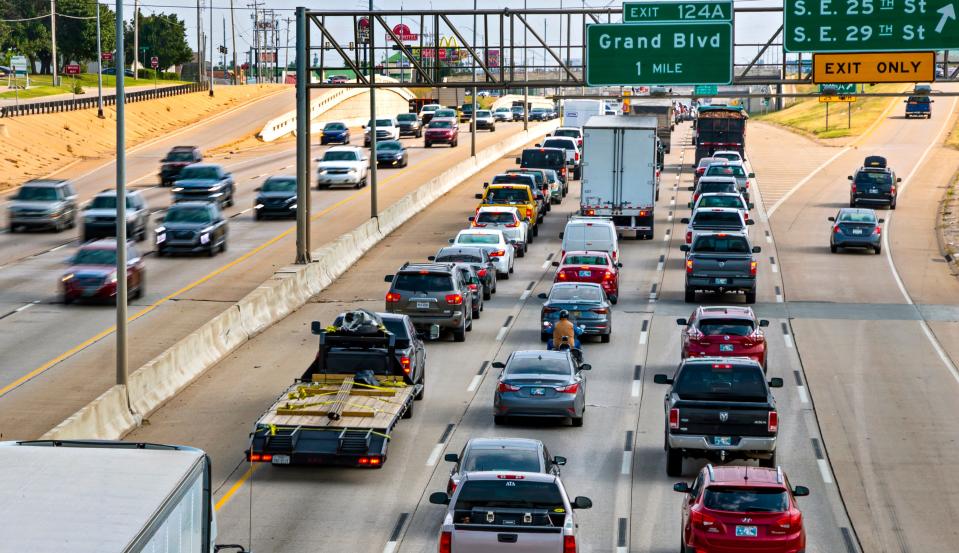
Murphy visited the terminus of I-35 in Laredo, Texas, just a short drive from the U.S.-Mexico border, and saw an expansion of commercial traffic across the border that “is just blowing up.”
“Our big economic drivers in Ardmore are energy companies like the Valero operations, manufacturers with companies like Michelin, and distribution centers like Dollar General, which has its largest (distribution) footprint at the Ardmore Airpark,” Murphy said. “We’ve got a real concentration of manufacturing and distribution centers that have always driven truck traffic in Oklahoma.”
New Oklahoma turnpikes, regional transit not seen as sufficient solution to projected traffic
Much of I-35 between Norman and Edmond is already at six lanes after three decades of construction. The only four-lane stretch of the highway in Oklahoma City, between NE 23 and NE 50, is on the state's eight-year project list.
Expansion of I-35 to six lanes in south Oklahoma City began in 1990s, and the I-240 junction is the last big project left. After that, Taylor said, the prospects for any further widening of the highway in south Oklahoma City are limited despite worsening traffic jams on the stretch between Norman and the Oklahoma River.
In the absence of further relief on I-35 in south Oklahoma City, two options are possible to address traffic — toll roads and public transportation.

The Oklahoma Turnpike Authority may sell the first $500 million of $5 billion in bond debt as early as next month to resume work on ACCESS Oklahoma, which includes a toll road that would act as an alternative for those traveling between Edmond and Purcell.
Oklahoma City, Edmond and Norman, meanwhile, are a part of the Regional Transportation Authority of Central Oklahoma that is likely to call for a sales tax election next year to fund a north-south commuter rail running between the three cities.
Forecasts by engineers used as a basis for the toll roads predict Oklahoma City’s population, most recently estimated at 687,725, will jump to about 1 million by 2050. Maps produced by the turnpike authority to justify the new toll roads show traffic back-ups spreading all along I-35 between Oklahoma City and Norman without construction of new toll roads.

Opponents, however, point out the forecasts have been wrong before and are wrong again because they ignore upcoming highway improvements and overstate population and traffic growth. The growth forecast conflicts with a study by the city of Oklahoma City that projects the city’s population will hit 891,000 in 2050, short of the 1 million predicted by the turnpike authority.
Taylor, the Transportation Department's chief engineer, acknowledged the prospects of new reliever toll roads and a commuter rail but said worsening traffic along I-35 will still be a challenge for engineers to address even if those options become a reality. He called the need for a new reliever toll road around south Oklahoma City “unescapable.”
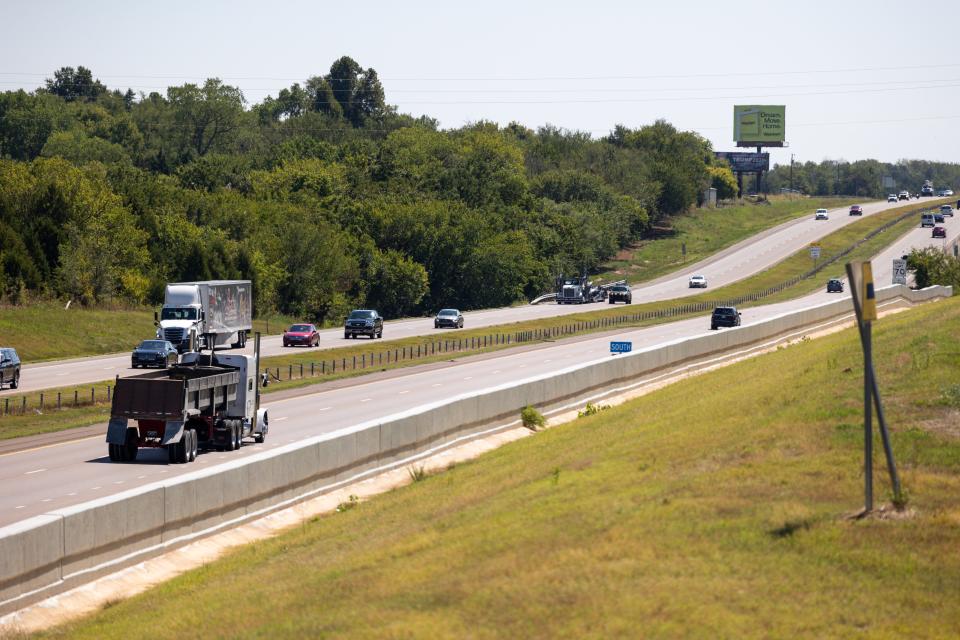
“We’ve identified a problem, and it’s going to get worse,” Taylor said. “And we don’t have the traditional resources available to address it. We’re going to have to take this very seriously because there’s going to be induced demand when they (Texas) start bringing I-35 to six lanes. It’s not slowing down, and that’s not happening on any of Oklahoma’s other borders.”
This article originally appeared on Oklahoman: I-35 traffic for Red River Rivalry is rough. It's about to get worse

